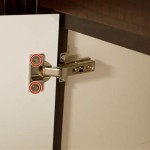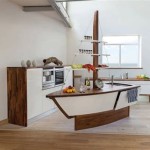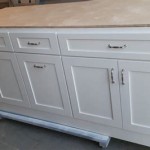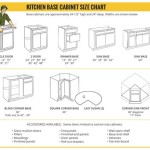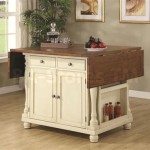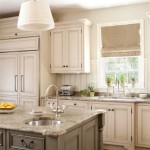How To Organize Your Kitchen Cabinets And Drawers
An organized kitchen can significantly streamline meal preparation, reduce stress, and make the entire cooking process more enjoyable. Optimizing the use of cabinet and drawer space is crucial for achieving this efficiency. A well-organized kitchen minimizes the time spent searching for necessary tools and ingredients, allowing for a more focused and fluid cooking experience. This article outlines a systematic approach to organizing kitchen cabinets and drawers, providing practical strategies and considerations for creating a functional and aesthetically pleasing culinary space.
Before initiating the organization process, a comprehensive assessment of the current situation is essential. This involves taking inventory of all items stored in the cabinets and drawers, identifying infrequently used items, and evaluating the existing storage solutions. This initial evaluation will inform the subsequent steps and guide the selection of appropriate organizational strategies.
Step 1: Empty, Clean, and Evaluate Existing Space
The first step in organizing kitchen cabinets and drawers is to completely empty each space. Remove all items, including dishes, cookware, utensils, and food items. This allows for a thorough assessment of the available space and facilitates cleaning. As items are removed, group them into categories, such as cookware, bakeware, serving dishes, pantry items, and utensils. This categorization will be helpful when determining the optimal placement of each item later in the process.
Once the cabinets and drawers are empty, thoroughly clean the interiors. Vacuum or sweep out any crumbs, dust, or debris. Use a damp cloth or sponge with a mild cleaning solution to wipe down all surfaces. Pay particular attention to areas that may have food spills or grease buildup. Allow the cabinets and drawers to air dry completely before replacing any items. This cleaning process creates a fresh start and eliminates potential sources of odors or pests.
After cleaning, evaluate the condition of the cabinets and drawers themselves. Check for any damage, such as loose hinges, broken drawer slides, or warped shelves. Repair or replace any damaged components to ensure the functionality and longevity of the storage spaces. Consider adding shelf liners to protect the cabinet surfaces from scratches and spills. Shelf liners also provide a non-slip surface, which can help prevent items from sliding around.
Evaluate the existing storage solutions within the cabinets and drawers. Determine if the current layout is maximizing the available space and if any adjustments can be made to improve organization. Consider the placement of shelves, drawers, and dividers. Evaluate if the current configuration is suitable for the types of items that will be stored in each space. If necessary, brainstorm alternative layouts or storage solutions that may be more effective.
Step 2: Declutter and Prioritize
The decluttering process is a critical component of kitchen organization. It involves identifying and removing items that are no longer needed, used, or in good condition. This step significantly reduces the amount of items that need to be stored, making it easier to organize and manage the remaining items. A practical approach to decluttering involves evaluating each item individually and asking specific questions to determine its necessity.
For each item, ask the following questions: When was the last time this item was used? Is this item in good working condition? Do I have duplicates of this item? Is this item essential for my cooking or baking needs? If the answer to these questions indicates that the item is rarely used, damaged, or redundant, consider removing it from the kitchen. Items that are in good condition can be donated to charity, sold online, or given away to friends or family members. Items that are broken or unusable should be discarded properly.
Prioritize the remaining items based on frequency of use. Items that are used frequently should be placed in easily accessible locations, such as the front of cabinets or the top drawers. Items that are used less frequently can be stored in less accessible areas, such as the back of cabinets or the bottom drawers. This prioritization strategy ensures that the most essential items are readily available when needed.
Consider the size and shape of the items when prioritizing. Bulky or oddly shaped items may require specialized storage solutions, such as large containers or adjustable shelves. Small, frequently used items can be grouped together in containers or organizers to prevent them from getting lost or scattered. This approach helps to maintain a neat and orderly appearance and maximizes the available space.
Step 3: Implement Effective Storage Solutions
Selecting and implementing appropriate storage solutions is crucial for maximizing space and maintaining order in the kitchen cabinets and drawers. A variety of storage solutions are available, ranging from simple organizers to custom-built systems. The choice of storage solutions should be based on the specific needs and preferences of the individual, as well as the available space and budget.
Shelf organizers can be used to create vertical storage space in cabinets. These organizers typically consist of tiered shelves or wire racks that allow for stacking items, such as dishes, bowls, or canned goods. Shelf organizers are particularly useful for maximizing space in tall cabinets or for separating different types of items. Adjustable shelves provide flexibility in organizing items of varying heights. These shelves can be repositioned to accommodate taller or shorter items, maximizing the use of the vertical space.
Drawer dividers are essential for keeping utensils, cutlery, and other small items organized in drawers. Dividers can be made of plastic, wood, or metal and can be adjustable to fit different drawer sizes. Dividers prevent items from sliding around and becoming jumbled, making it easier to find what you need. Utensil trays are specifically designed to hold utensils in an organized manner. These trays typically have compartments for different types of utensils, such as spoons, forks, knives, and spatulas.
Consider utilizing containers to store pantry items like flour, sugar, pasta, and cereals. Airtight containers help to keep food fresh for a longer period, prevent pests, and create a uniform look in the pantry. Labeling the containers with the contents and expiration dates helps to easily identify items and prevent food waste. Clear containers are particularly useful as they allow you to see the contents at a glance.
For pots and pans, consider using pot racks or vertical organizers. Pot racks can be hung from the ceiling or mounted on the wall, freeing up cabinet space. Vertical organizers allow you to store pots and pans vertically in cabinets, preventing them from stacking on top of each other and becoming difficult to access. Consider using lid organizers to keep pot lids organized and easily accessible. These organizers can be mounted on the inside of cabinet doors or placed on shelves.
Implement pull-out shelves or drawers in lower cabinets for easier access to items. These shelves and drawers allow you to reach items in the back of the cabinet without having to bend down or reach over other items. Pull-out shelves are particularly useful for storing heavy items, such as pots and pans. Lazy Susans can be used in corner cabinets to maximize space and provide easy access to items. These rotating shelves allow you to reach items in the back of the cabinet without having to reach over other items.
Use the back of cabinet doors for additional storage. Install hooks or racks on the inside of cabinet doors to hold items, such as measuring cups, measuring spoons, spices, or cleaning supplies. This maximizes the use of the available space and keeps these items easily accessible. Consider using over-the-door organizers for storing cleaning supplies, spices, or small items. These organizers hang over the door and provide additional storage space without taking up cabinet space.
By implementing these storage solutions, the kitchen cabinets and drawers can be transformed into a highly organized and functional space. This will improve efficiency in the kitchen and make the cooking process more enjoyable.

How To Organize Kitchen Drawers Hallstrom Home

How To Organize Your Kitchen Cabinets Step By Project The Container

25 Best Ideas For How To Organize Kitchen Cabinets

How To Organize Kitchen Cabinets And Drawers For Good

Kitchen Cabinet Drawers Organization Ideas Designcafe

Lower Cabinet Organization Starter Kit The Container

How To Organize Kitchen Cabinets

How To Organize The Inside Of Your Kitchen Cabinets

How We Organized Our Kitchen Drawers And Cabinets Jenna Sue Design

How We Organized Our Kitchen Drawers And Cabinets Jenna Sue Design
Related Posts

